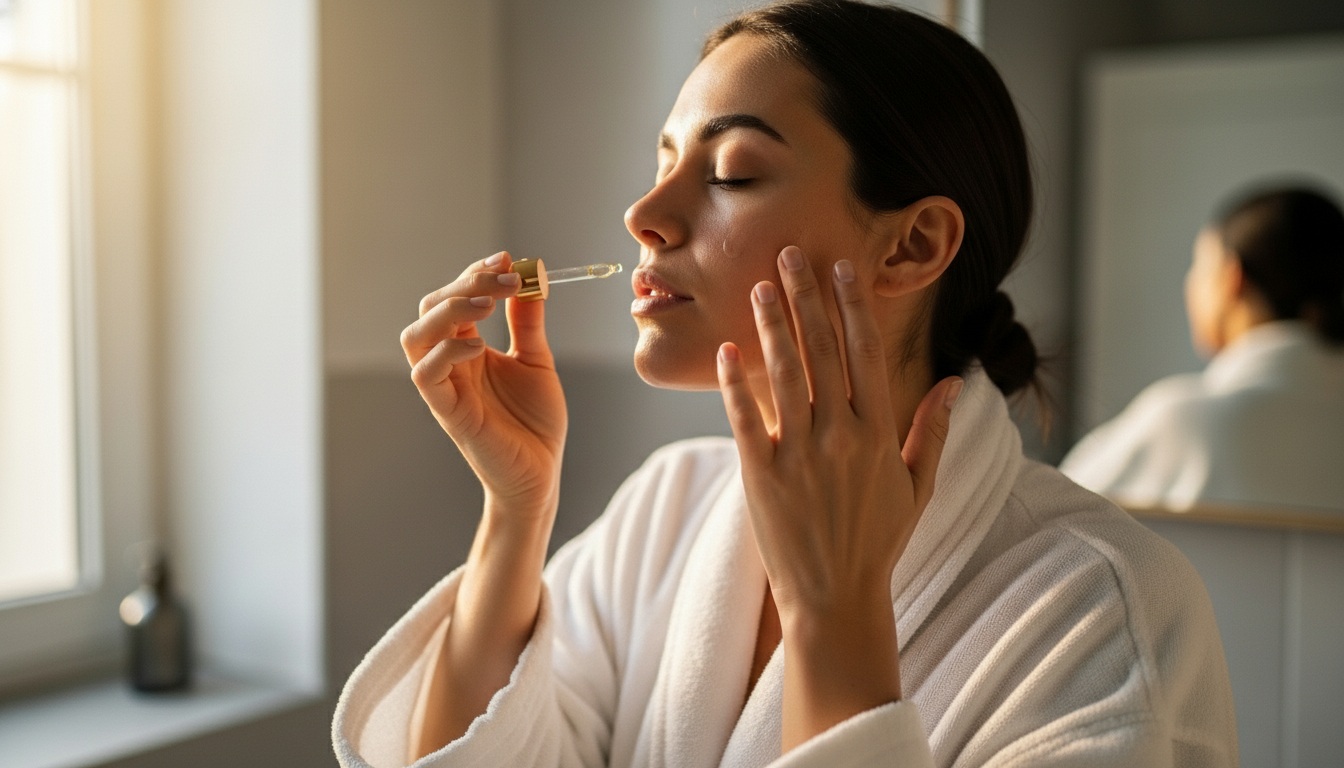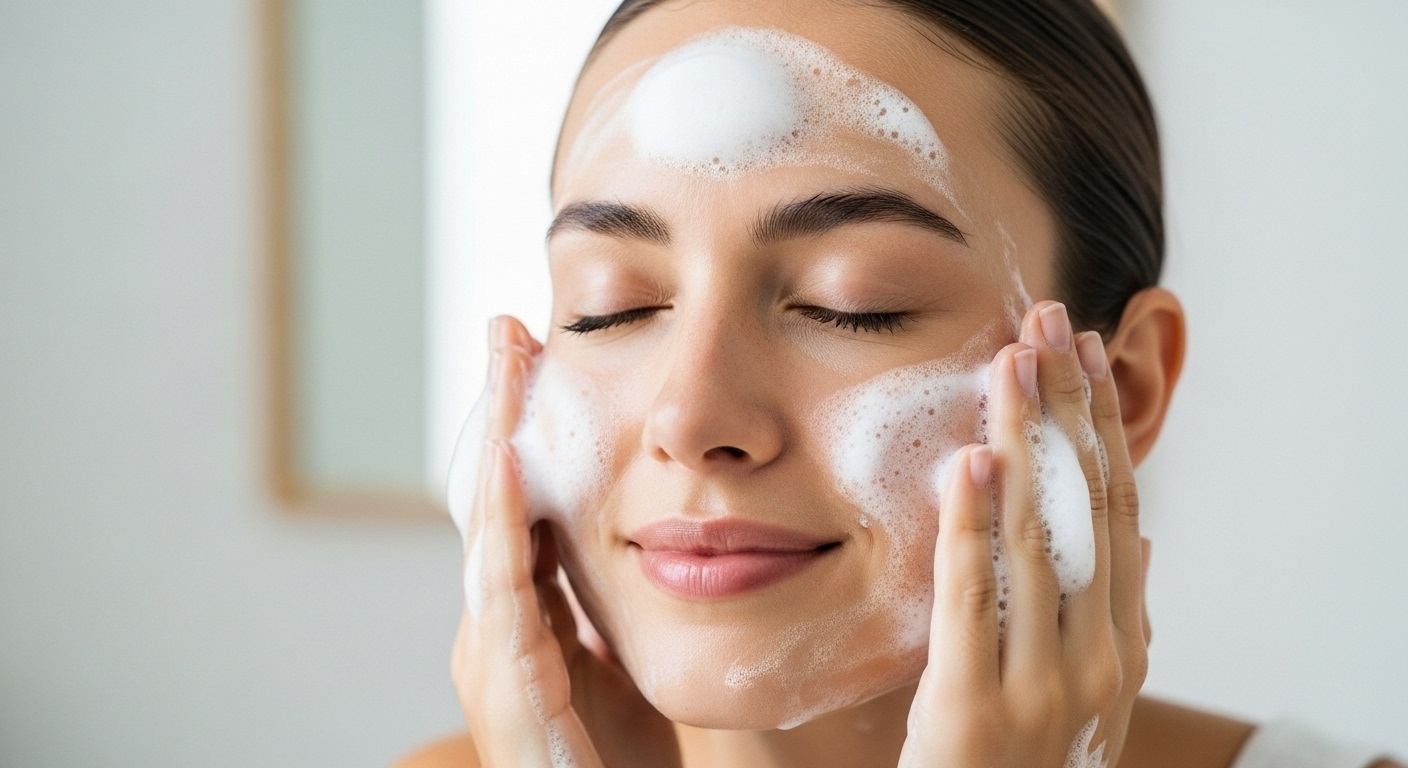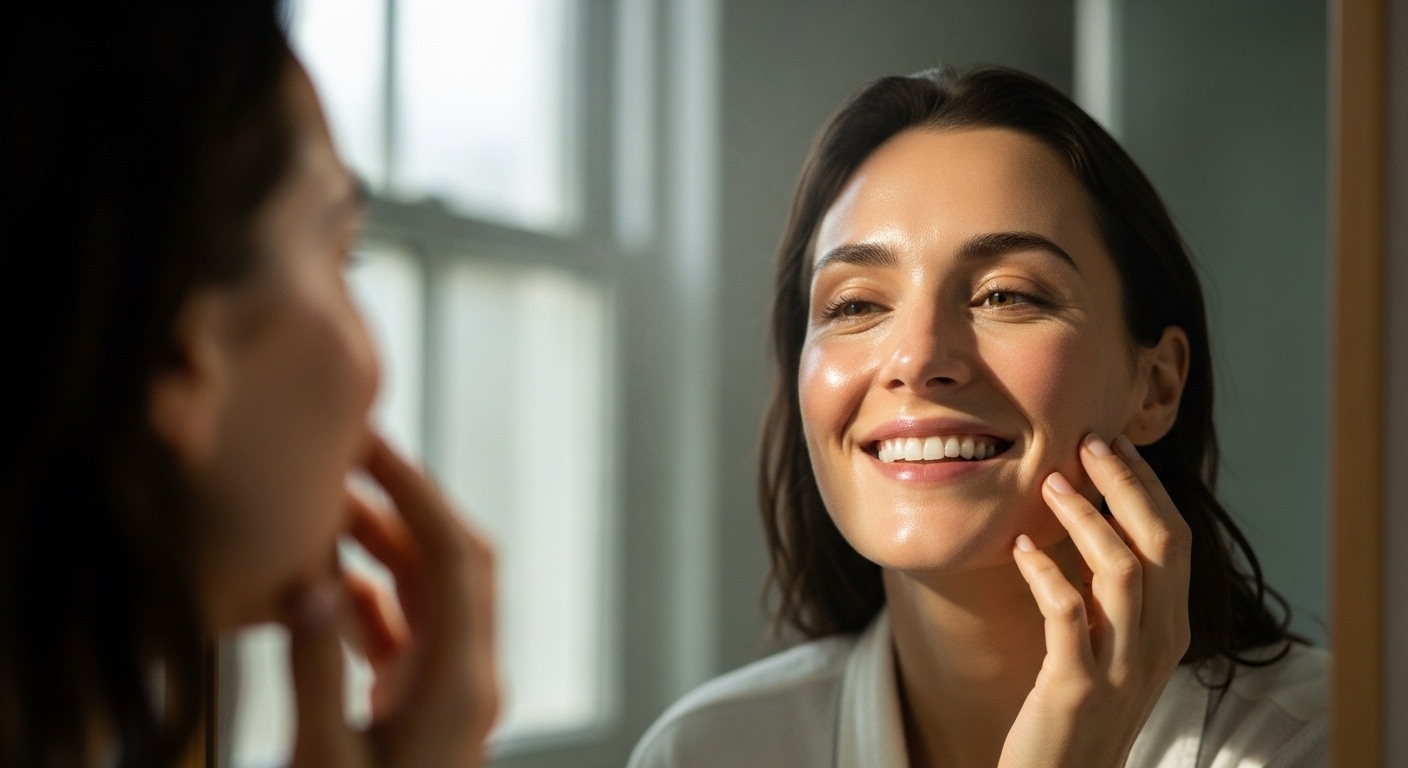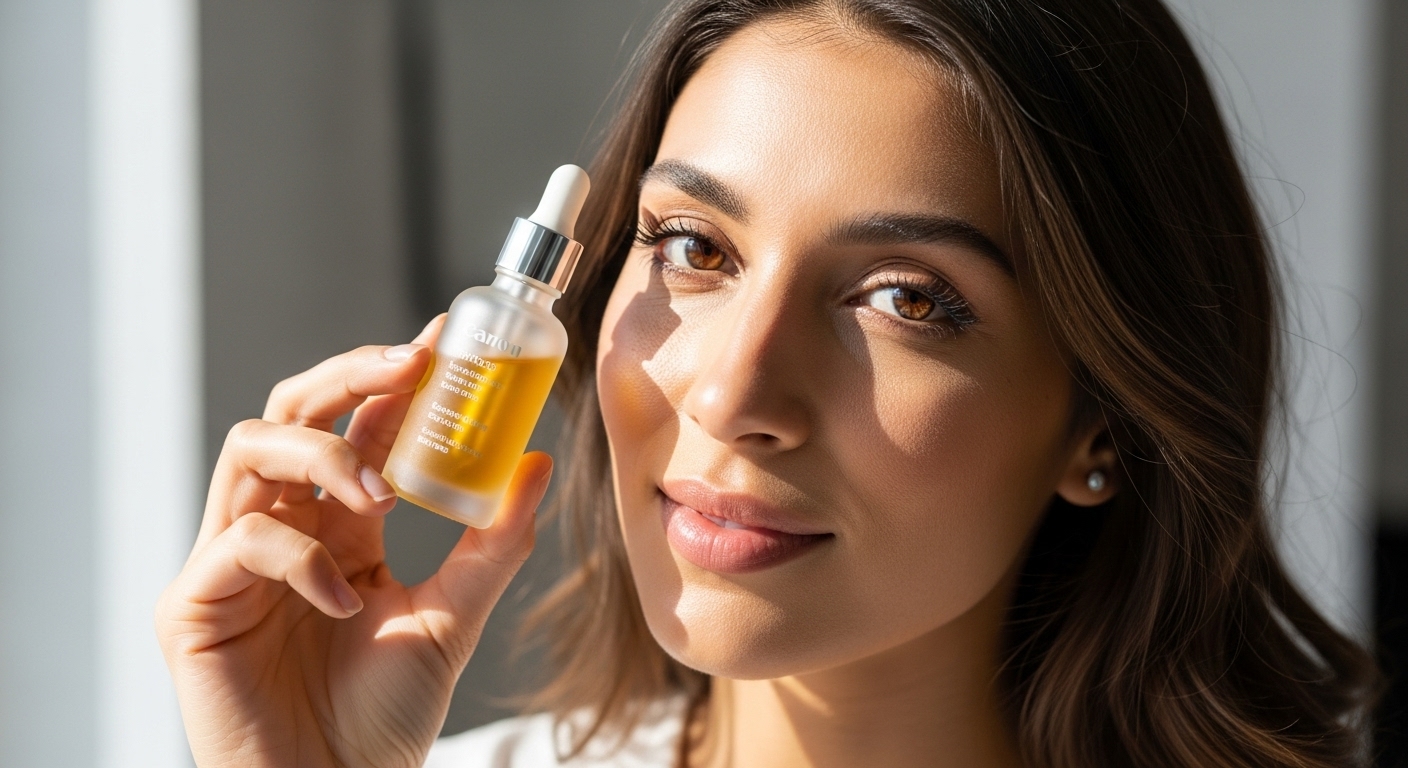
Complete Skincare Routine for Women Over 30
Turning 30 is a milestone that brings wisdom, confidence, and for many, a shift in skincare needs. As we age, our skin undergoes significant changes—collagen production slows, cell turnover decreases, and fine lines begin to appear. But with the right skincare routine, you can maintain healthy, radiant skin well into your 30s, 40s, and beyond. This comprehensive guide will walk you through every step of an effective skincare routine tailored specifically for women over 30.
Understanding Your Skin in Your 30s
Before diving into products and routines, it's important to understand what's happening with your skin. In your 30s, several key changes occur that require adjusted skincare approaches.
Decreased Collagen Production
Starting in your mid-20s, collagen production decreases by about 1% per year. By your 30s, this reduction becomes more noticeable, leading to loss of skin elasticity and firmness. Fine lines around the eyes and mouth may start to appear, and skin may look less plump than it once did.
Slower Cell Turnover
The rate at which your skin sheds dead cells and generates new ones slows down significantly. This can result in dullness, uneven texture, and a loss of that youthful glow. Products that encourage cell turnover, like retinoids and chemical exfoliants, become increasingly important.
Increased Dryness
Oil production gradually decreases with age, which can lead to drier skin, especially if you had oily or combination skin in your 20s. This requires richer moisturizers and hydrating serums to maintain skin's moisture barrier.
Morning Skincare Routine
A consistent morning routine protects your skin from environmental stressors throughout the day and creates the perfect canvas for makeup application.
Step 1: Gentle Cleansing
Start your day with a gentle, hydrating cleanser that removes overnight oil production without stripping your skin. Avoid harsh sulfates that can disrupt your skin's natural pH balance. Look for cream or gel cleansers with hydrating ingredients like hyaluronic acid or glycerin.
How to apply: Use lukewarm water and massage the cleanser into your skin using circular motions for 30-60 seconds. Rinse thoroughly and pat dry with a clean towel—never rub, as this can cause irritation and contribute to premature aging.
Step 2: Toning
Toners help balance your skin's pH, remove any remaining traces of cleanser or impurities, and prepare your skin to better absorb subsequent products. Choose alcohol-free formulas with hydrating and soothing ingredients like rose water, chamomile, or centella asiatica.
Application tip: Apply toner with clean hands or a reusable cotton pad, gently pressing it into the skin rather than wiping.
Step 3: Antioxidant Serum
Morning is the ideal time for an antioxidant serum, particularly one containing Vitamin C. Antioxidants protect your skin from free radical damage caused by UV rays, pollution, and other environmental stressors. Vitamin C also brightens the complexion and stimulates collagen production.
Key ingredients to look for:
- L-Ascorbic Acid (Vitamin C) at 10-20% concentration
- Vitamin E for enhanced antioxidant protection
- Ferulic Acid to stabilize and boost vitamin C effectiveness
- Niacinamide for brightness and pore refinement
Step 4: Eye Cream
The skin around your eyes is the thinnest and most delicate, making it the first area to show signs of aging. A targeted eye cream addresses fine lines, dark circles, and puffiness.
Look for: Caffeine to reduce puffiness, peptides to support collagen, hyaluronic acid for hydration, and light-reflecting particles to brighten dark circles. Apply using your ring finger (which applies the least pressure) and gently pat the product around the orbital bone—never pull or tug.
Step 5: Moisturizer
A good morning moisturizer should hydrate without feeling heavy or greasy under makeup. Look for lightweight formulas with ingredients like hyaluronic acid, glycerin, and ceramides that strengthen your skin's moisture barrier.
If you have dry skin, opt for richer cream formulas. Oily or combination skin types should choose gel or gel-cream textures that provide hydration without excess oil.
Step 6: Sunscreen (Most Important!)
This is the single most important step in any anti-aging routine. UV damage is the primary cause of premature aging, including wrinkles, age spots, and loss of elasticity. Use a broad-spectrum SPF 30 or higher every single day, regardless of weather or season.
Sunscreen essentials:
- Apply at least 1/4 teaspoon for face and neck
- Wait 15 minutes before sun exposure for full protection
- Reapply every 2 hours when outdoors
- Choose mineral (zinc oxide, titanium dioxide) or chemical formulas based on preference
- Consider tinted sunscreens for additional coverage and protection from blue light
Evening Skincare Routine
Your nighttime routine is when the real anti-aging magic happens. While you sleep, your skin goes into repair mode, making it the optimal time for active ingredients and intensive treatments.
Step 1: Makeup Removal
Never skip this step! Sleeping in makeup clogs pores, prevents skin regeneration, and accelerates aging. Use a dedicated makeup remover—cleansing oils, micellar water, or cleansing balms work beautifully to dissolve even waterproof products.
Double cleansing method: First, remove makeup with an oil-based cleanser, then follow with your regular facial cleanser to remove any remaining residue. This ensures your skin is completely clean.
Step 2: Gentle Cleansing
Follow up your makeup removal with the same gentle cleanser from your morning routine. This removes the oil cleanser residue, excess sebum, and any environmental pollutants accumulated during the day.
Step 3: Exfoliation (2-3 times per week)
Chemical exfoliants are gentler and more effective than physical scrubs. They dissolve dead skin cells, revealing brighter, smoother skin underneath. In your 30s, regular exfoliation becomes crucial for maintaining a youthful complexion.
Types of exfoliants:

- AHAs (Alpha Hydroxy Acids) like glycolic and lactic acid work on the skin's surface, ideal for dry or sun-damaged skin
- BHAs (Beta Hydroxy Acids) like salicylic acid penetrate pores, perfect for oily or acne-prone skin
- PHAs (Polyhydroxy Acids) like gluconolactone offer gentle exfoliation for sensitive skin
Start with 2-3 times per week and adjust based on your skin's response. Always follow with hydrating products and never exfoliate on the same night as retinoid use.
Step 4: Toning
Apply your toner just as you did in the morning to rebalance skin and prepare it for treatment products.
Step 5: Treatment Serums
Evening is the time for powerful active ingredients. The star ingredient for anti-aging is retinoid (Vitamin A). Retinoids are the gold standard for reducing fine lines, improving texture, fading dark spots, and stimulating collagen production.
Retinoid guide:
- Beginners: Start with over-the-counter retinol at 0.25-0.5% concentration
- Intermediate: Progress to 1% retinol or adapalene
- Advanced: Consider prescription tretinoin for maximum results
Start slowly (once or twice weekly) and gradually increase frequency as your skin builds tolerance. Always use sunscreen diligently when using retinoids, as they increase sun sensitivity.
Alternative actives: If retinoids irritate your skin, consider bakuchiol (a natural retinol alternative), peptides, or growth factors for anti-aging benefits.
Step 6: Eye Cream
Your nighttime eye cream can be richer than your morning formula. Look for ingredients like retinol (in gentle concentrations), peptides, and nourishing oils to address fine lines and crepiness while you sleep.
Step 7: Night Cream or Sleeping Mask
Night creams are typically richer than day moisturizers, designed to deeply nourish and repair skin overnight. Look for formulas with:
- Peptides to support collagen and elastin
- Ceramides to repair and strengthen the moisture barrier
- Niacinamide to improve skin tone and texture
- Hyaluronic acid for deep hydration
For extra hydration, use a sleeping mask 2-3 times per week. These intensive treatments lock in all your skincare products and provide an additional boost of nourishment.
Weekly Treatments
Supplement your daily routine with weekly treatments that target specific concerns and give your skin an extra boost.
Face Masks (1-2 times per week)
Different masks serve different purposes:
- Hydrating masks: Sheet masks or gel masks with hyaluronic acid
- Brightening masks: Vitamin C or niacinamide treatments
- Clay masks: For deep pore cleansing (oily/combination skin only)
- Overnight masks: Intensive hydration and repair
Professional Treatments
Consider incorporating professional treatments into your skincare regimen:
- Monthly: Professional facials tailored to your skin concerns
- Quarterly: Chemical peels for deeper exfoliation
- As needed: Microneedling, laser treatments, or LED therapy for specific issues
Lifestyle Factors for Healthy Skin
Skincare products are only part of the equation. These lifestyle factors significantly impact your skin's health and appearance:
Hydration
Aim for at least 8 glasses of water daily. Proper hydration plumps skin cells, improves elasticity, and helps flush toxins that can cause breakouts and dullness.
Sleep Quality
Aim for 7-9 hours of quality sleep. During sleep, your skin repairs itself, produces collagen, and increases blood flow. Lack of sleep leads to dark circles, dullness, and accelerated aging.
Nutrition
Your diet directly affects your skin. Focus on:
- Antioxidant-rich fruits and vegetables
- Omega-3 fatty acids from fish, nuts, and seeds
- Lean proteins for collagen production
- Limit sugar and processed foods that cause inflammation
Stress Management
Chronic stress increases cortisol, which breaks down collagen and causes inflammation. Practice stress-reduction techniques like meditation, yoga, or regular exercise.
Avoid Smoking and Limit Alcohol
Smoking dramatically accelerates aging by restricting blood flow and breaking down collagen. Alcohol dehydrates skin and causes inflammation. Minimize or eliminate both for optimal skin health.
Common Mistakes to Avoid
Even with good intentions, these common mistakes can sabotage your skincare routine:
Over-Exfoliating
More is not better when it comes to exfoliation. Over-exfoliating damages your skin barrier, causing sensitivity, redness, and increased aging. Stick to 2-3 times per week maximum.
Skipping Sunscreen
This is the biggest mistake you can make. UV damage is cumulative and irreversible. Wear sunscreen every single day, even indoors (windows don't block all UV rays).
Using Too Many Actives at Once
Layering multiple strong actives (retinoids, acids, vitamin C) can overwhelm and irritate skin. Introduce one new active at a time and space out strong treatments.
Not Giving Products Time to Work
Skincare requires patience. Most products need 4-12 weeks to show results. Resist the urge to constantly switch products—consistency is key.
Neglecting Your Neck and Chest
These areas show age just as much as your face. Extend all your skincare products down to your chest for comprehensive anti-aging care.
Customizing Your Routine
While this guide provides a comprehensive framework, remember that everyone's skin is unique. Adjust based on your specific concerns:
For Hyperpigmentation
Add: Vitamin C serum, niacinamide, alpha arbutin, or tranexamic acid. Always use SPF 50+ religiously.
For Acne-Prone Skin
Add: Salicylic acid, benzoyl peroxide, or azelaic acid. Use non-comedogenic products and avoid heavy oils.
For Rosacea or Sensitivity
Focus on: Gentle, fragrance-free products with soothing ingredients like centella asiatica, niacinamide, and azelaic acid. Avoid harsh actives.
For Very Dry Skin
Add: Facial oils (rosehip, squalane, marula), richer cream moisturizers, and hydrating sheet masks. Consider slugging (sealing everything with an occlusive like petrolatum) at night.
Building Your Skincare Budget
Quality skincare is an investment, but it doesn't have to break the bank. Prioritize spending on these items:
Splurge on:
- Sunscreen (use generously, so quality matters)
- Retinoid or treatment serums (active ingredients matter)
- Eye cream (specialized formulations)
Save on:
- Cleansers (they wash off anyway)
- Toners (many affordable options work well)
- Basic moisturizers (drugstore brands often equal luxury)
Conclusion
Your 30s are the perfect time to establish a comprehensive skincare routine that will serve you well for decades to come. With consistent care, quality products, and healthy lifestyle choices, you can maintain radiant, youthful skin well beyond your 30s. Remember, skincare is personal—what works for others may not work for you, so don't be afraid to adjust this routine to suit your unique needs.

Be patient with your skin, consistent with your routine, and always remember that the best time to start taking care of your skin was yesterday—the second best time is today. Your future self will thank you for the investment you make in your skin health now.
